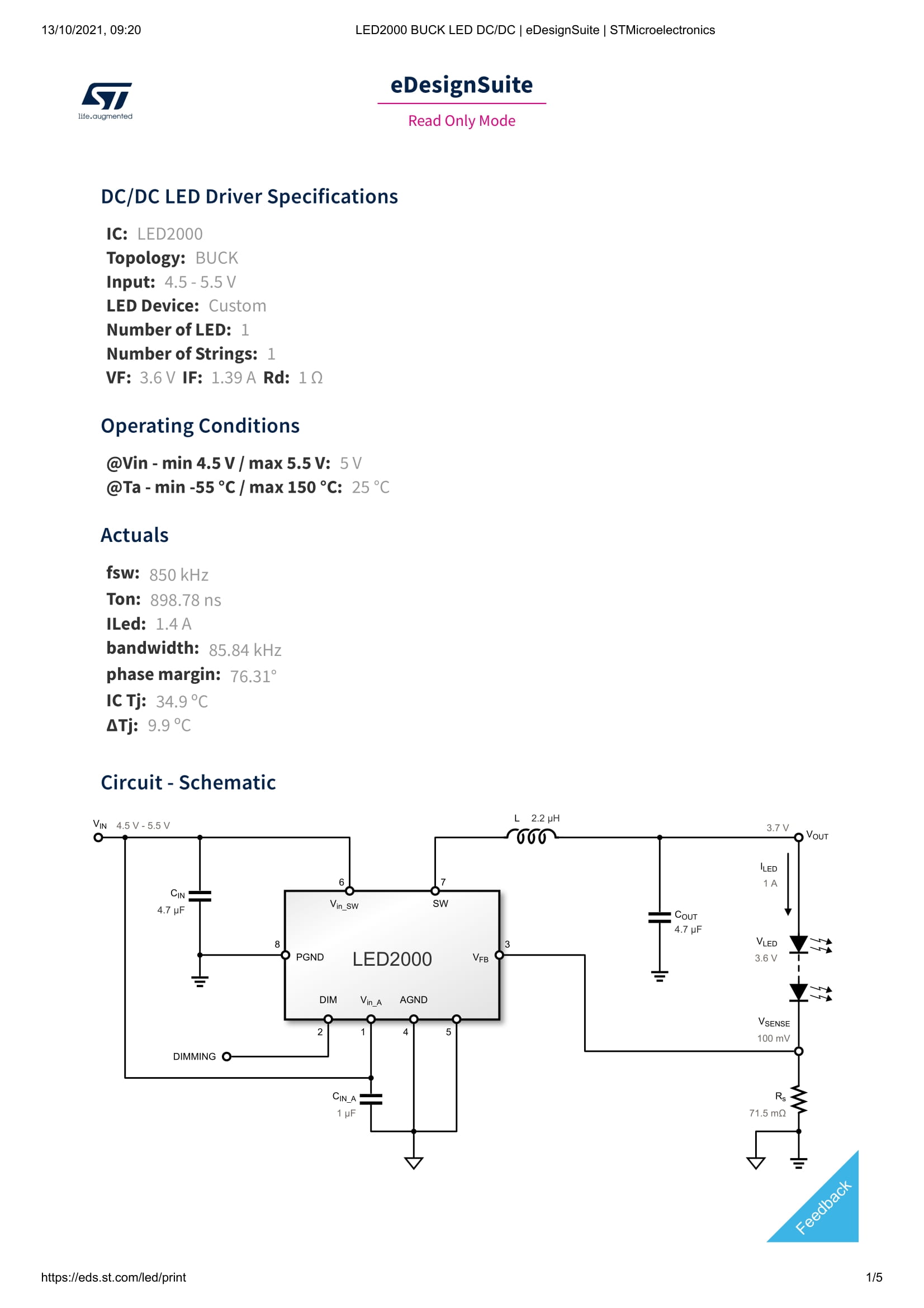I'm designing a buck LED circuit using a LED2000PUR (Data sheet). The issue that I am having is that the LED I'm designing for doesn't have a data sheet, and I need to determine the dynamic resistance so that I can select an appropriate output capacitor. The only parameters that I know, is the LED runs off of 3.6 V and has an If of 1.39 A.
Here is the link for what I am designing for.
Information about dynamic resistance can be found on page 15 and information about inductor and output capacitor selection can be found on page 22 of the datasheet.
My system will run off of 5 V from a powerbank.
Below is an equivalent circuit:

simulate this circuit – Schematic created using CircuitLab
The manufacturer has a tool on their website where entering the input voltages and LED specifications will output recommended components. I've preferred this as I'm not an Electrical Engineer and I find the data sheet to be oddly written.
My observations from manipulating the values are:
- Cout capacity and voltage decrease when Rd increases
- Cout values decrease when LED ripple percentage increases
- Cout values decrease and L values increase when Il Ripple percentage increases

